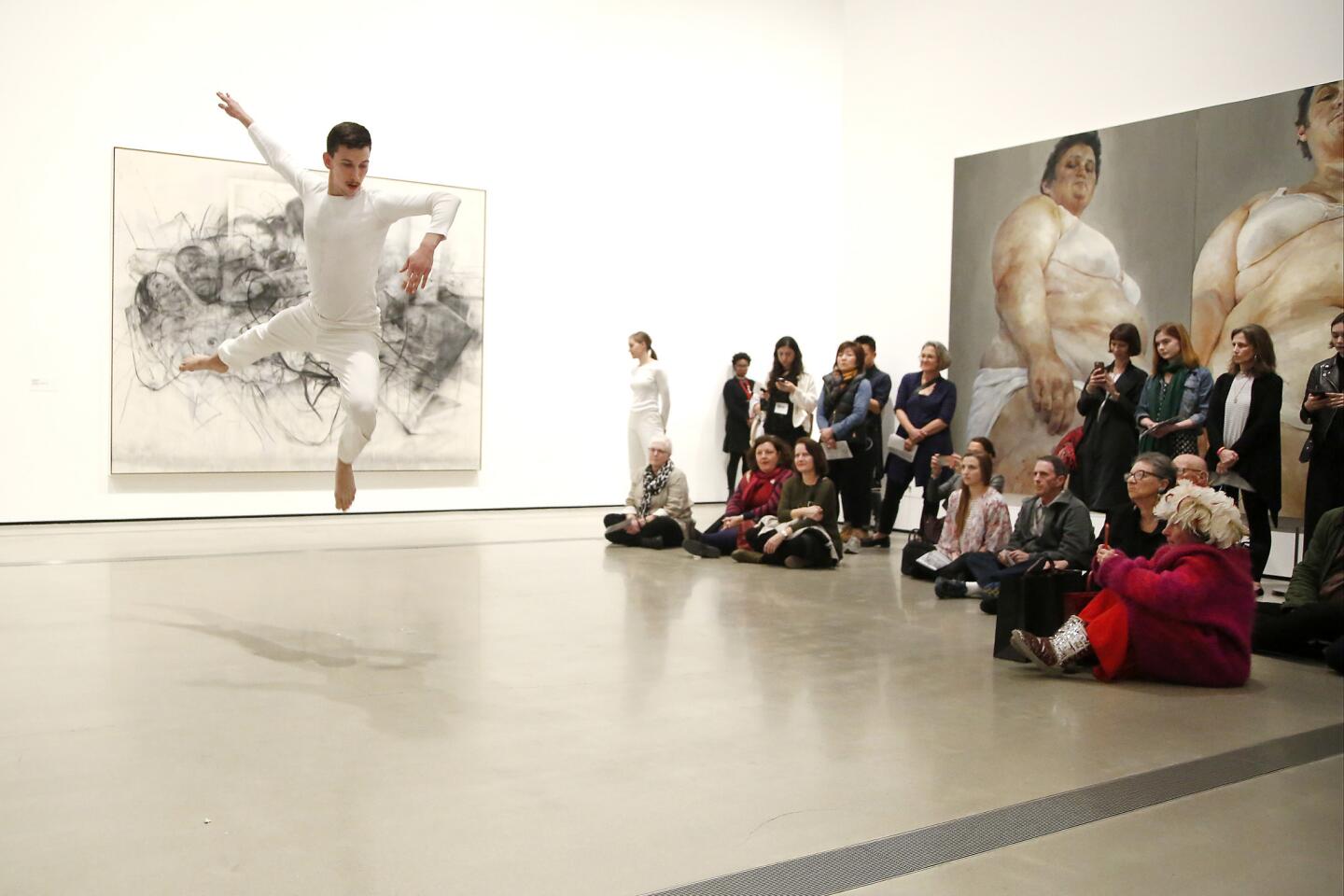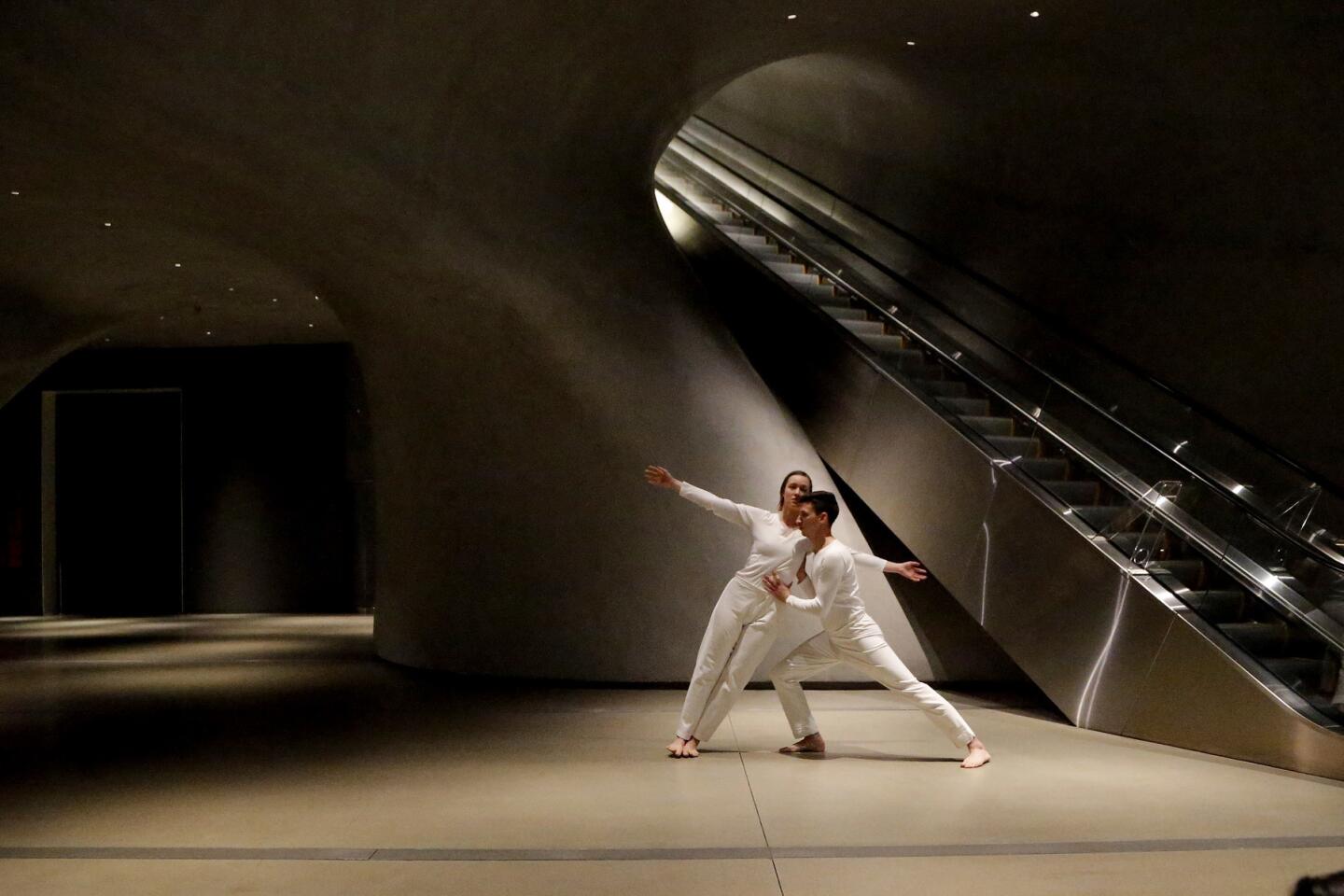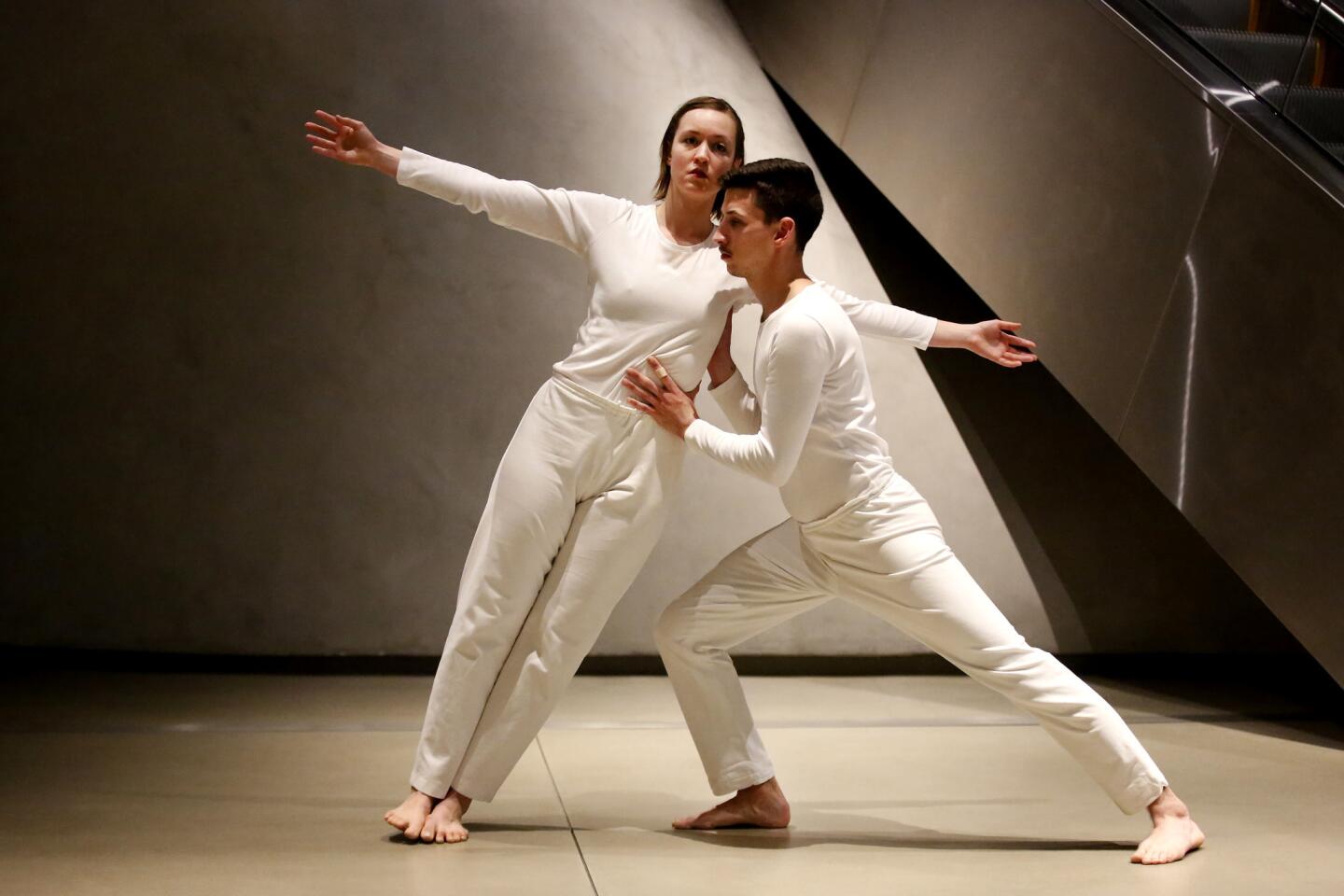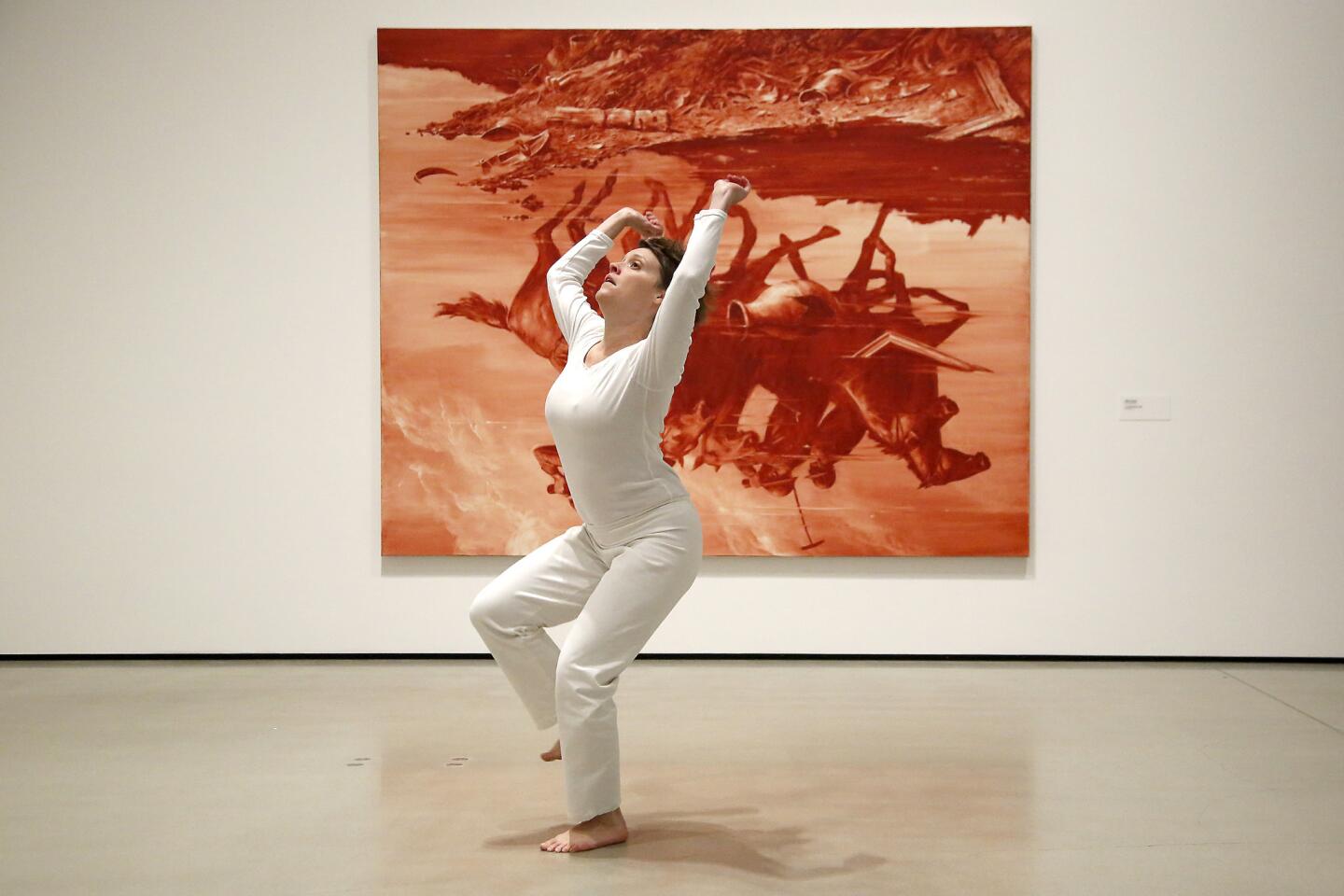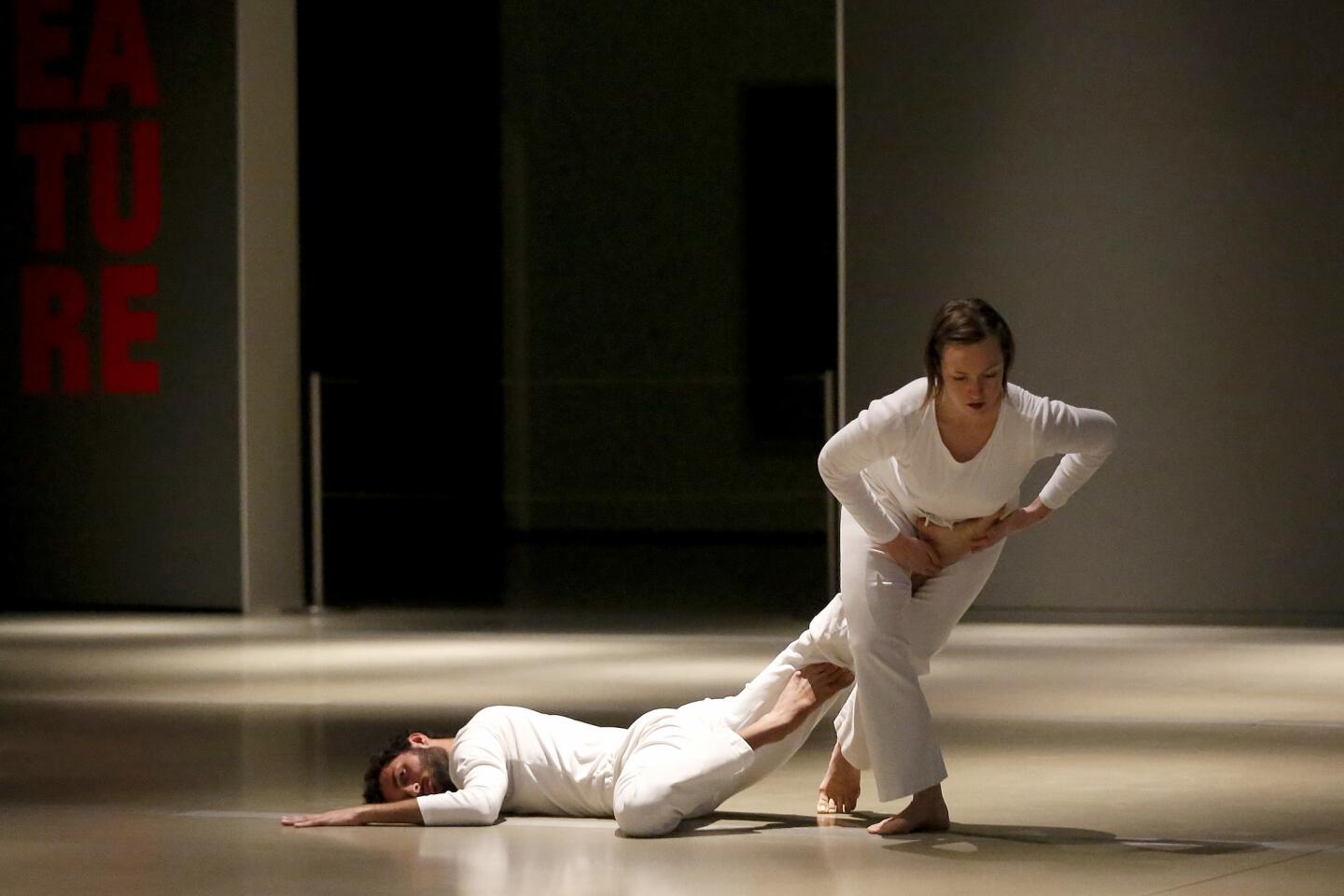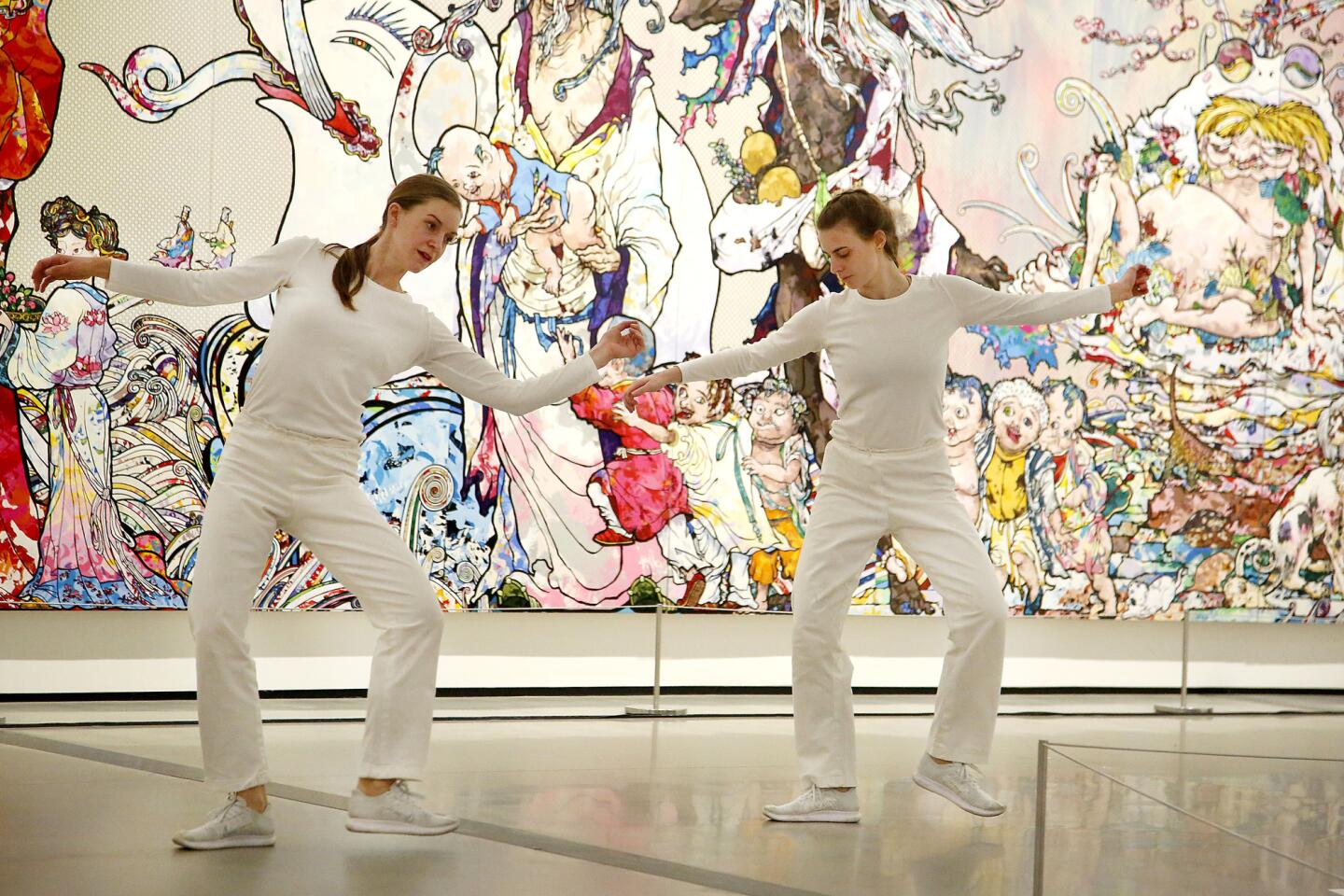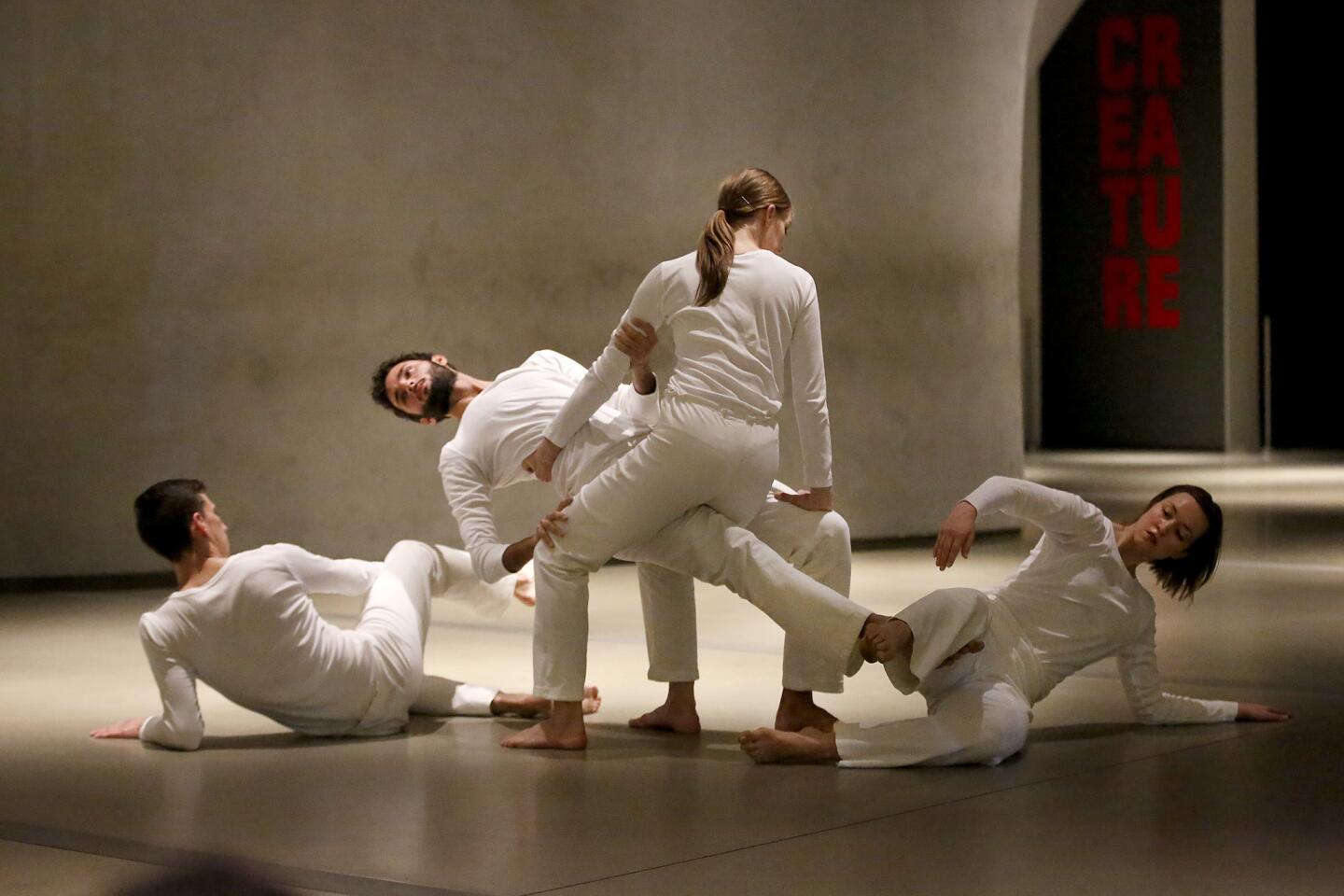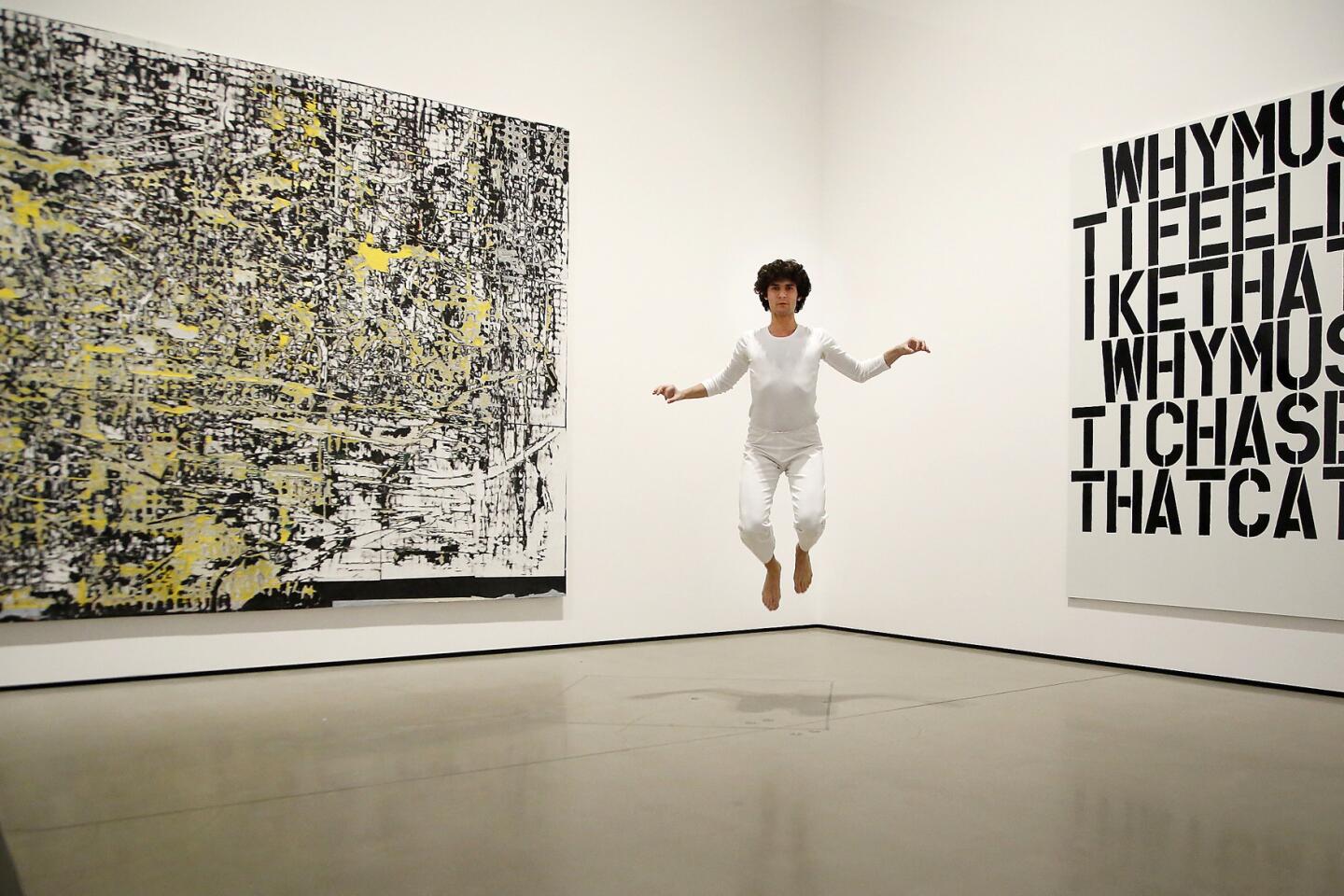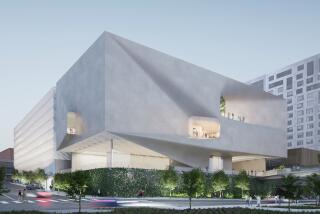Who are those dancers spinning through the Broad (and LACMA and the Getty)?
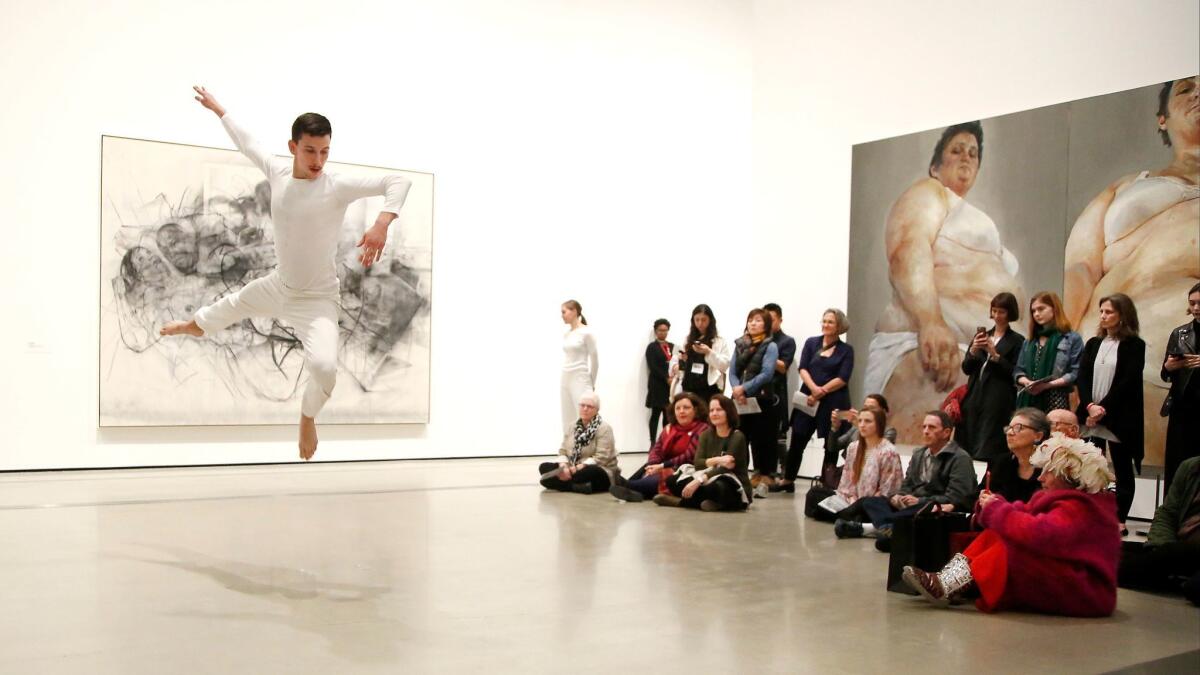
The dancers spin and twist in the cosmic space between Jeff Koons’ candy-colored “Tulips” sculpture and Takashi Murakami’s massive painting “In the Land of the Dead, Stepping on the Tail of a Rainbow.” It’s an easy-breezy routine — very lazy-Sunday-with-a-mimosa, accompanied by a jazzy Dave Douglas tune.
A hundred viewers have gathered at the Broad museum to watch this spectacle, part of a series winding its way through museums across the city called “Trisha Brown: In Plain Site Los Angeles.”
Presented through Sunday by the Center for the Art of Performance at UCLA in collaboration with the Broad, the Getty, the Los Angeles County Museum of Art and the Hauser Wirth & Schimmel gallery, the program presents the work of the acclaimed New York experimental dance company in the unexpected landscape provided by museum and gallery spaces. Also unexpected: the entertainment value of not just the dancers but also the audience, as performance art inspires people watching as its own form of spectator sport.
You can’t own or collect a dance, but you can collect the intelligence of that art form.
— Kristy Edmunds, CAP UCLA artistic director
For the Broad performance Tuesday night, the crowd gathered as night fell, the headlights of cars crawling down Grand Avenue in downtown L.A. cutting through the lobby windows, mingling unexpectedly with the museum’s dim, gray interior.
The clack and whir of the escalator is the only sound as the dancers, dressed in white, intertwine their bodies like tangled tree roots.
The well-heeled crowd is mostly older — dressed largely in black, silver hair in angular cuts, smart black-framed glasses. Also here is a smattering of young, scarf-clad dance enthusiasts, many lean and long, as though from a lifetime of stretching.
The pre-show star, however, is a diminutive older woman wearing a hat that resembles a soft helmet made of perky white feathers salted with dashes of red and blue feathers. Her body is enveloped, shoulder to ankle, by a chunky-knit maroon sweater that brushes against the tops of silver-sequined Ugg boots. She carries a large red purse the size of a child’s toy chest.
“Look at her; she’s got herself a costume. See her costume, mother?” an older gentleman says a bit too loudly to his wife, who is wearing sensible suede black boots. The group has moved to a gallery to watch a performance in front of Julie Mehretu’s “Invisible Sun,” and the man is trying to decide whether to sit on the floor like the woman in the feather hat.
Viewers have been split into groups of 25 and directed to different galleries for different performances. Audience-watching, art-watching and dance-watching form equal parts of the intimate experience. The dancers morph into living, breathing sculpture — at once molding, and being molded, by an environment devoted to the collection and display of objects.
Kristy Edmunds, the artistic director of CAP UCLA, muses that hopefully audience members will revisit the museum at a later date and see the dances as a ghost image in the space.
“You can’t own or collect a dance, but you can collect the intelligence of that art form,” she says. “Audiences become the archive of that experience.”
Also present is the Trisha Brown Dance Company’s associate artistic director, Carolyn Lucas, a bird of a woman with kind eyes and a soft, trilling voice.
She says the best part for the dancers is performing in such close proximity to their audience.
“People develop a different perspective as viewers than they would if they were just sitting in a chair,” she says.
That might not be the case if you’re Instagramming the experience. Two college-age women shrink their perspective to an iPhone screen as they employ the popular app to snap pictures, which they quickly emblazon with questionable witticisms.
Without disturbing the docent-mandated space between her and a Mark Tansey painting, one of the Instagrammers has surreptitiously photographed the woman in the feather hat and uploaded it to her newsfeed. Her caption: “Yes Please.”
Cellphones cloud judgment once again when, after a particularly compelling performance in front of Mark Bradford’s “Yellow Bird,” a woman stops and mugs for a picture way too close to the art.
A docent appears out of nowhere, deus ex machina-style.
“Take a step away from the painting,” he commands.
The audience is clumsy in comparison to the dancers, who never once appear to threaten the art, no matter how high they leap or how far they stretch. When they sleep at night, are their dreams just as graceful? Do they toss and turn in tandem? Do they explore the cozy expanse of their sheets with conviction?
A pleasantly wandering mind is a side effect of this itinerant, avant-garde performance piece, which is not exactly art and not exactly dance. A hybrid that invites your imagination to soar alongside it.
The second-to-last piece is enacted by a woman lying on her back in front of Jean-Michel Basquiat’s “Eyes and Eggs,” a tortured canvas depicting what appears to be a black fry cook holding a pan of eggs that eerily mirror the pain in his eyes. The dancer’s motions are small and repetitive. A leg is extended from the hip, a hand is drawn over the right ear, the body turns on its side, the phrase reoccurs.
The old man who earlier couldn’t decide whether to sit or stand has settled for standing, and he blinks in a way that indicates confusion. The Instagramming women are finally silent, contemplative. The woman in the feather hat sits pensively soaking in the moment. The gallery is silent. The art on the walls is watching.
When the hour-long program ends, the crowd funnels out of the museum and onto the corner of 2nd Street and Grand. People stop and stare at a well-lighted glass-walled room on the second floor of the Colburn School across the street. Inside, students in leotards are taking a dance lesson.
The room is illuminated like a stage against the black curtain of night. Life itself is the next act.
♦ ♦ ♦ ♦ ♦ ♦ ♦ ♦ ♦ ♦
‘Trisha Brown: In Plain Site, Los Angeles’
Where and when: The Getty Center 2 and 5 p.m. Friday; LACMA at 4 and 5:30 p.m. Saturday; Hauser Wirth & Schimmel at 4:30 p.m. Sunday.
Admission: Free; registration required for Hauser Wirth & Schimmel performance
Information: (310) 825-2101, www.cap.ucla.edu/trishabrown
ALSO:
More to Read
The biggest entertainment stories
Get our big stories about Hollywood, film, television, music, arts, culture and more right in your inbox as soon as they publish.
You may occasionally receive promotional content from the Los Angeles Times.
